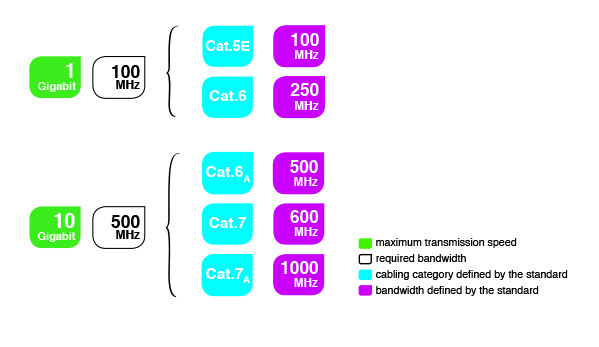International standards have defined five cabling categories - Cat.5E, Cat.6, Cat.6A Cat.7, Cat.7A. However, there are only two performance levels represented by two transmission speeds - 1 Gigabit/s and 10 Gigabit/s.Cat.5E is efficient for networks with transmission speed of 1 Gigabit/s whereas Cat.6A is optimal for networks with transmission speed of 10 Gigabit/s.
A transmission speed of 1 Gigabit/s complies with the fastest protocol 1000BASE-T where bandwidth of 100 MHz is required for the transmission. A transmission speed of 10 Gigabit/s complies with the fastest protocol 10GBASE-T where a bandwidth of 500 MHz is required for the transmission. The diagram below illustrates the relationship between the performance of structured cabling and the standardized categories:

As shown in the diagram, it is clear that the same performance can be achieved by several cabling categories. A required safety margin of 20% is already included in both 100 MHz and 500 MHz bandwidths required. Therefore a bandwidth above this value may not be used nor does it contribute to the enhancement of transmission reliability. However, installing Cat.7 and Cat.7A interoperable cables is reasonable and appropriate due to their increased resistance to electromagnetic interference.
